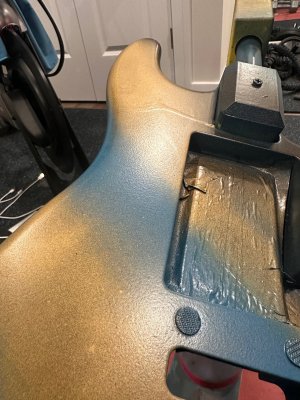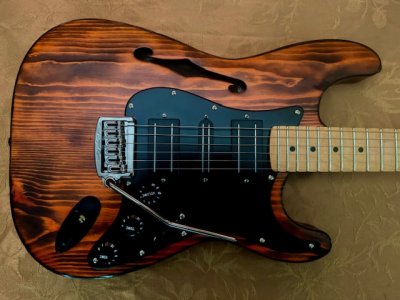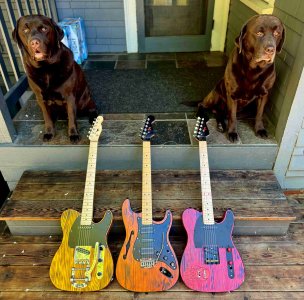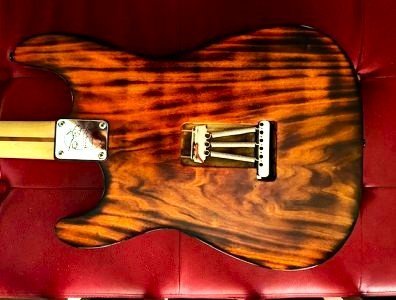Hi all,
Curious for the community's thoughts on best next step to smooth out a water-based clear coat finish.
Below is an image of an S-style body that I am almost done painting and sealing. I involved my younger kids in the project, so went with Liquitex water-based spray acrylics, which overall worked well. For the clear coat, I used Minwax water-based polycrylic via spray can, in the satin finish. Note the textured/orange peel look after my 2nd round of several light coats. I've read about wet sanding with finer and finer grit sandpaper then buffing to achieve a smooth finish, but wet sanding I have a feeling will not work great with this water-based polycrylic. After the first set of coats I dry-sanded it starting with about ~600 grit paper and then went progressively higher from there (up to about 2000 grit) but the scratches were still very evident, clearing up after i put on many more coats.
I scoured youtube and these forums but couldn't find a tutorial matching exactly what I am doing. For those with more experience in water-based clear coats: how would you smooth out this surface after the final coat, retaining clarity and avoiding visible scratches?
Any advice is much appreciated!!
p.s. the drip is intentional (my son's touch

Curious for the community's thoughts on best next step to smooth out a water-based clear coat finish.
Below is an image of an S-style body that I am almost done painting and sealing. I involved my younger kids in the project, so went with Liquitex water-based spray acrylics, which overall worked well. For the clear coat, I used Minwax water-based polycrylic via spray can, in the satin finish. Note the textured/orange peel look after my 2nd round of several light coats. I've read about wet sanding with finer and finer grit sandpaper then buffing to achieve a smooth finish, but wet sanding I have a feeling will not work great with this water-based polycrylic. After the first set of coats I dry-sanded it starting with about ~600 grit paper and then went progressively higher from there (up to about 2000 grit) but the scratches were still very evident, clearing up after i put on many more coats.
I scoured youtube and these forums but couldn't find a tutorial matching exactly what I am doing. For those with more experience in water-based clear coats: how would you smooth out this surface after the final coat, retaining clarity and avoiding visible scratches?
Any advice is much appreciated!!
p.s. the drip is intentional (my son's touch






